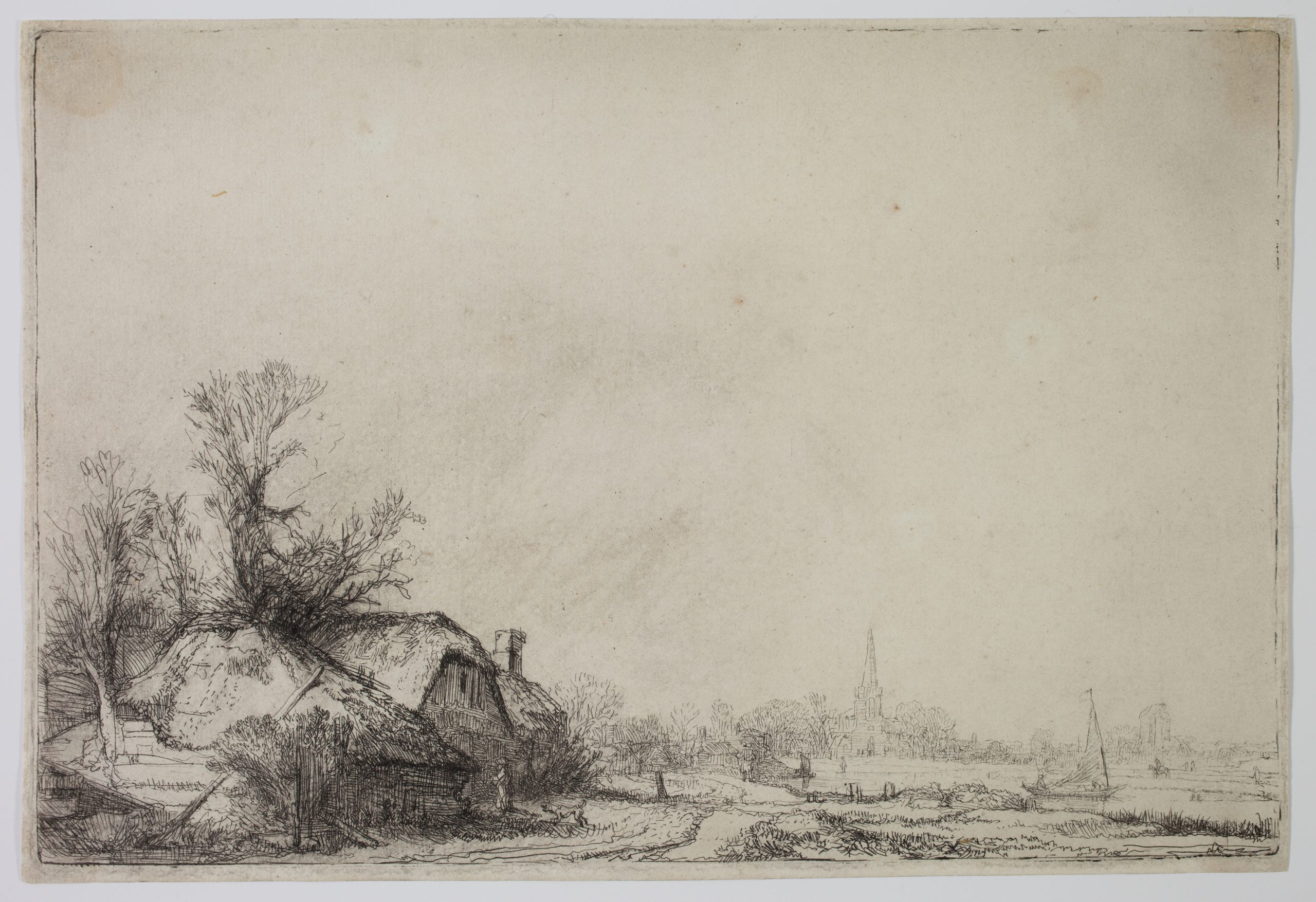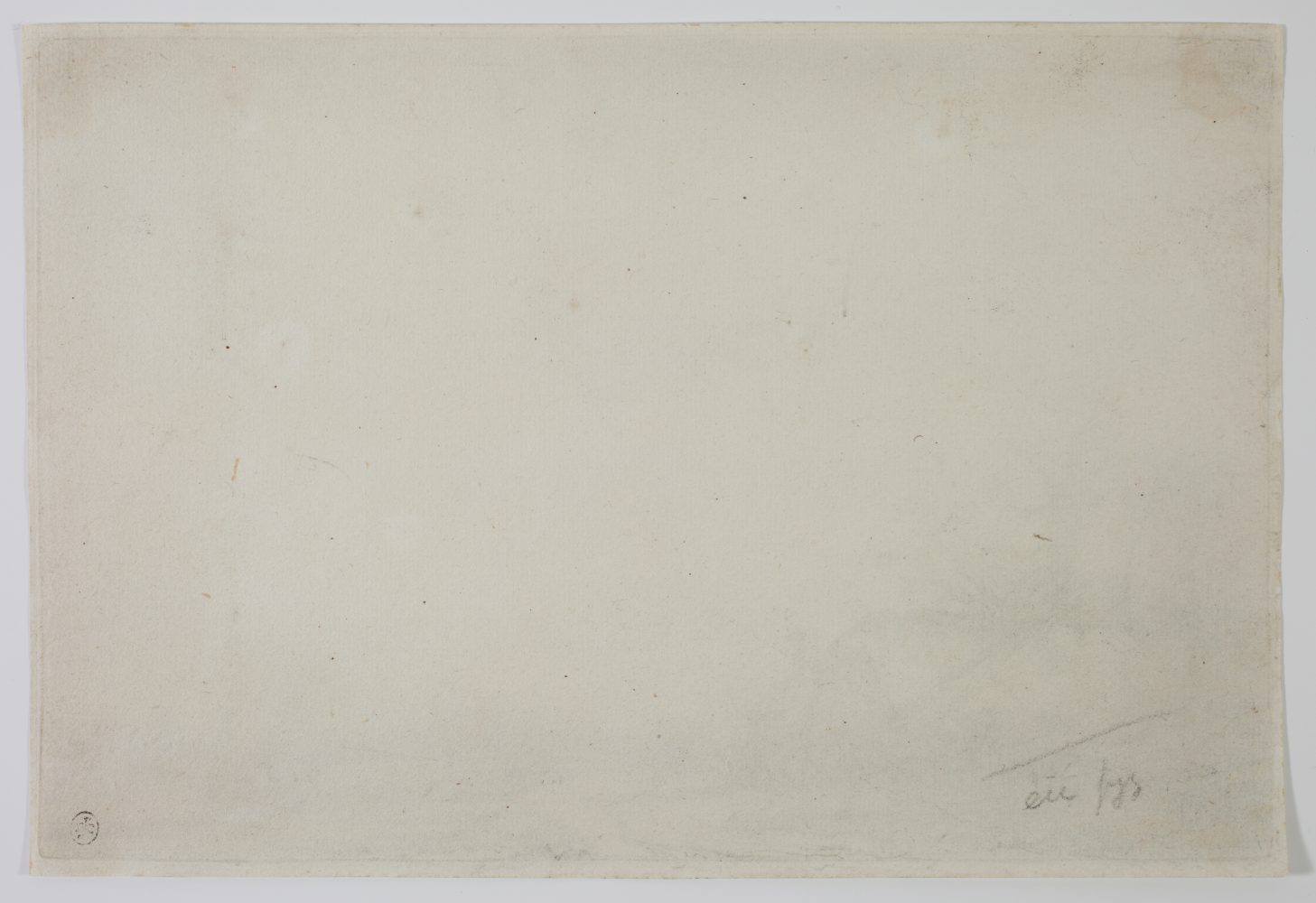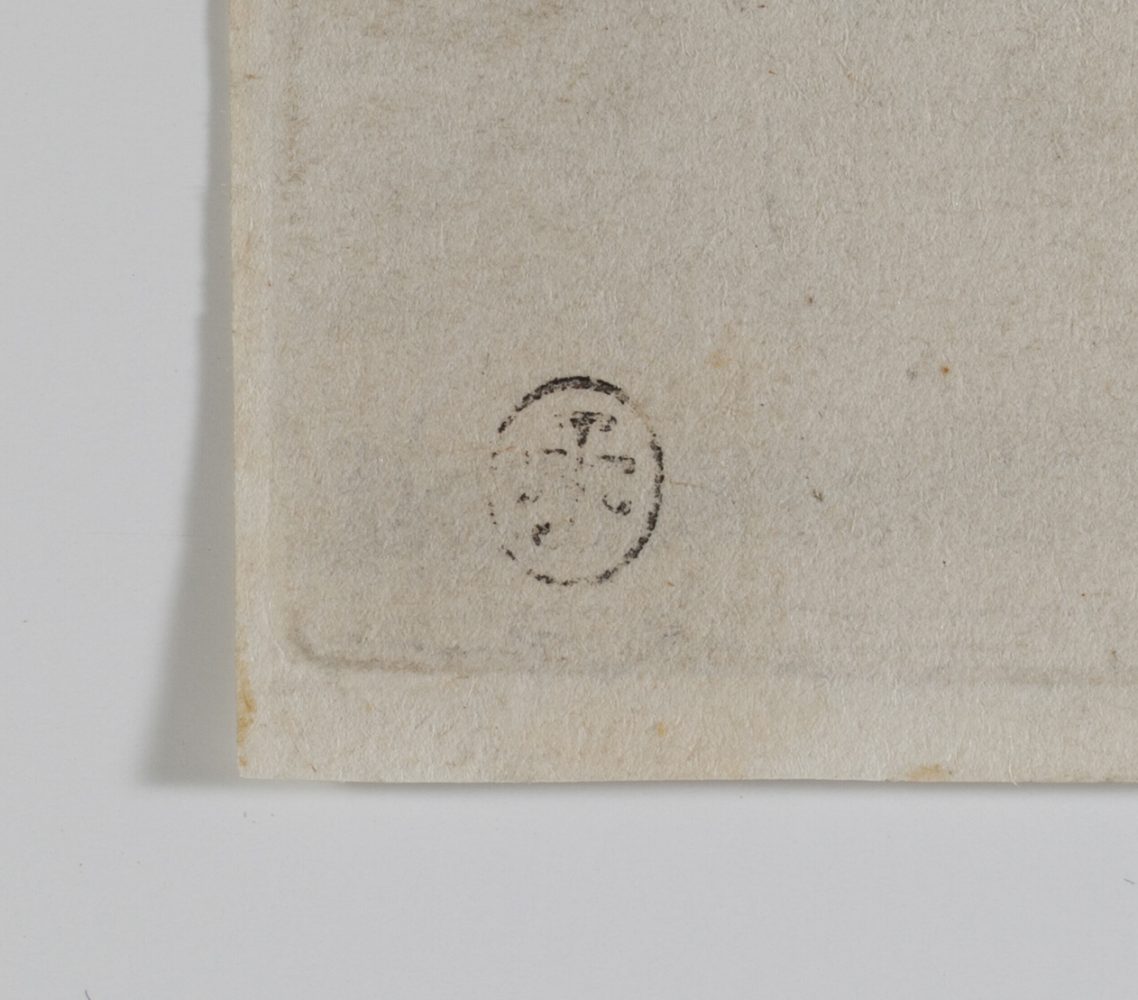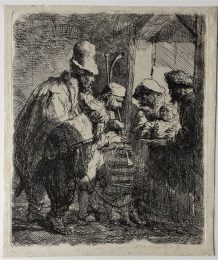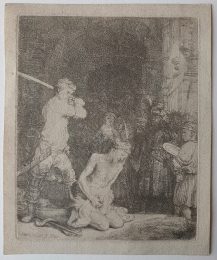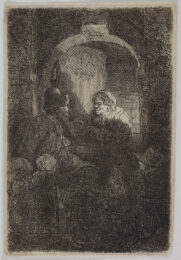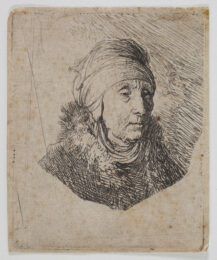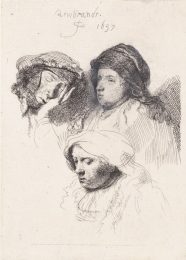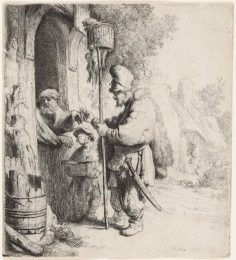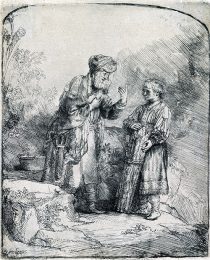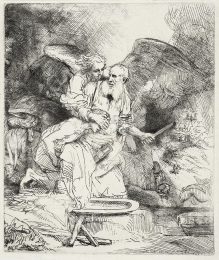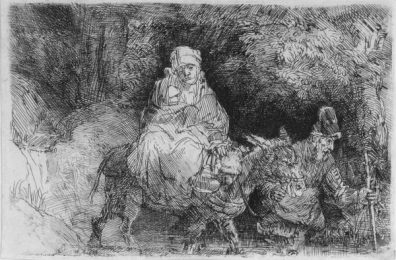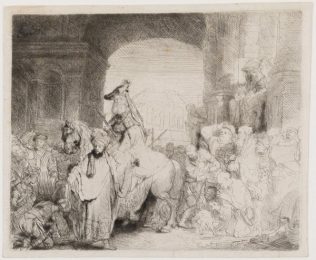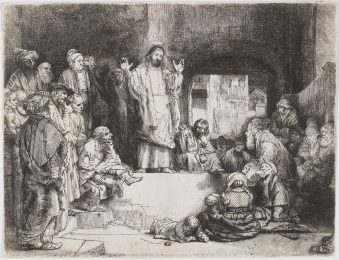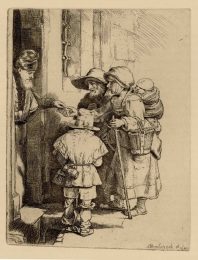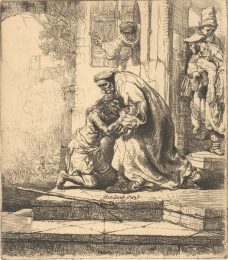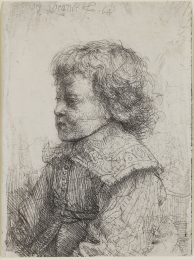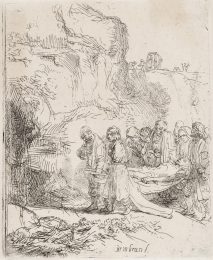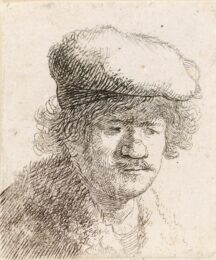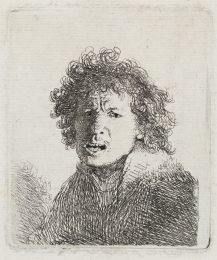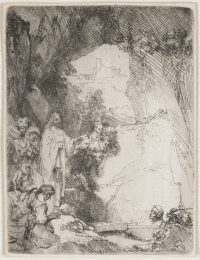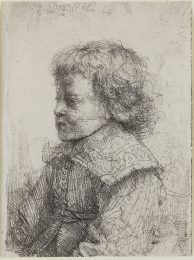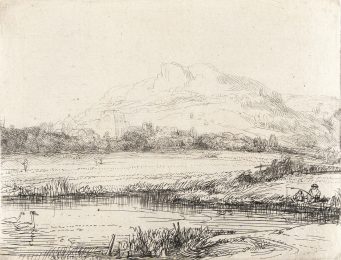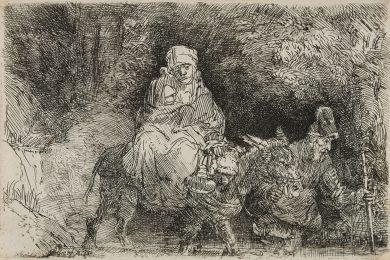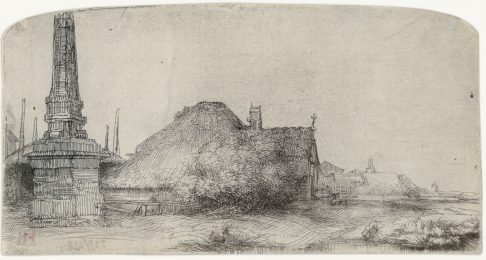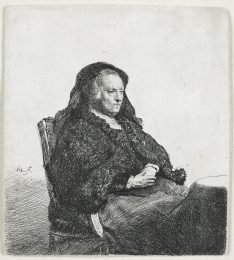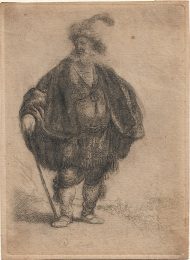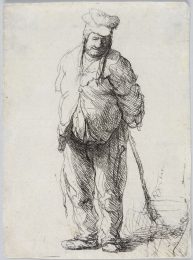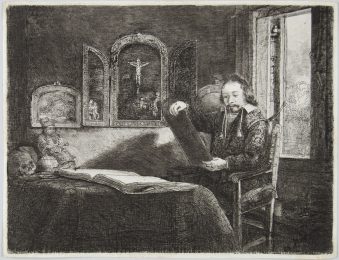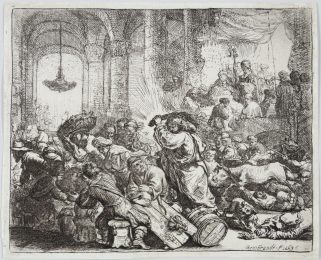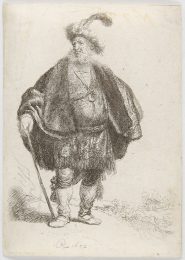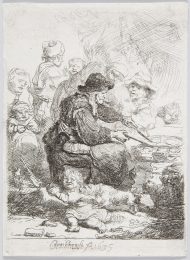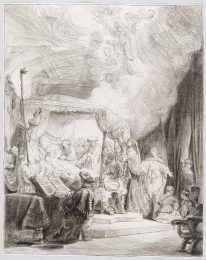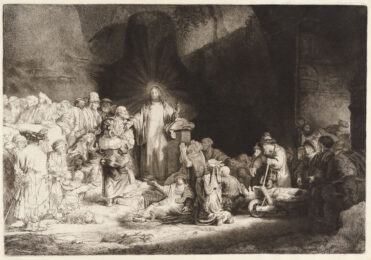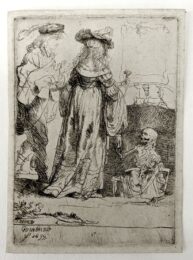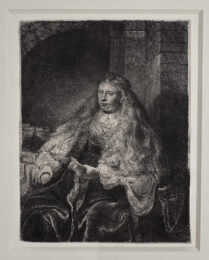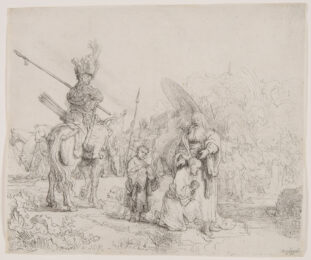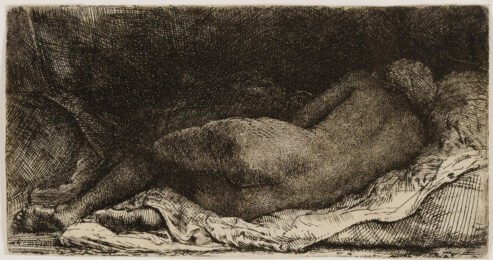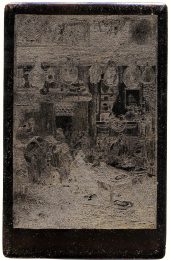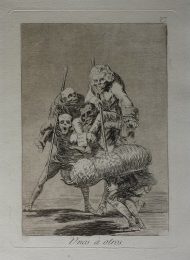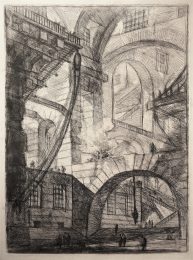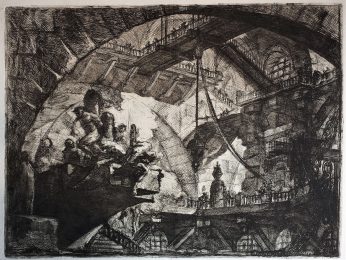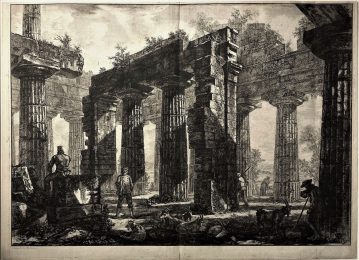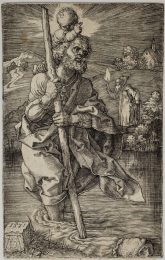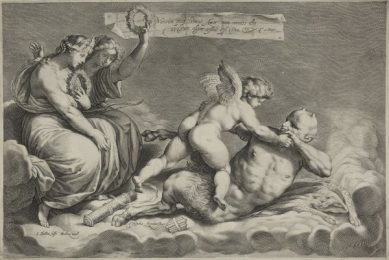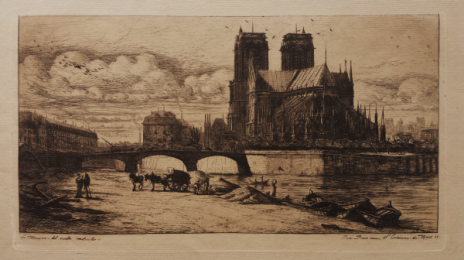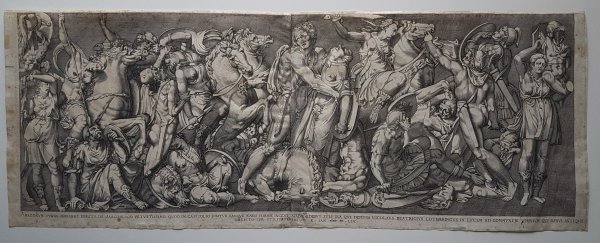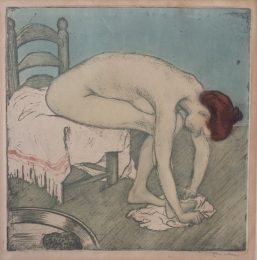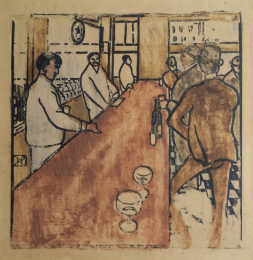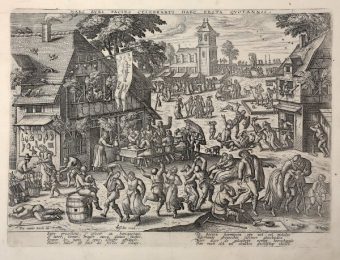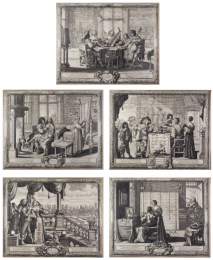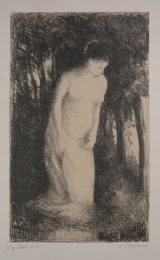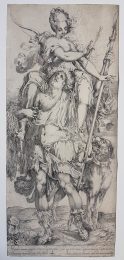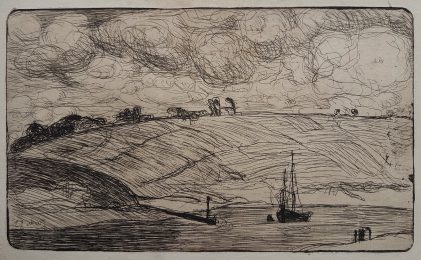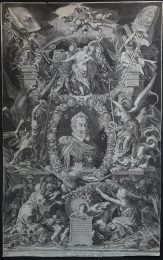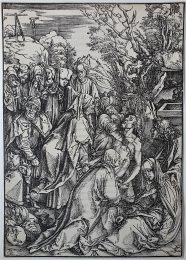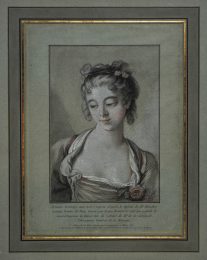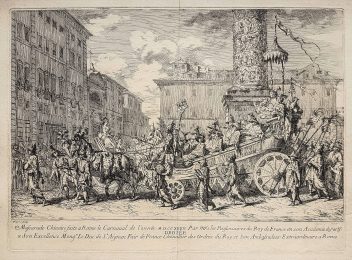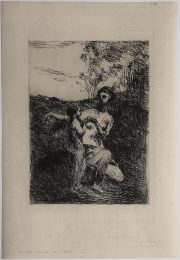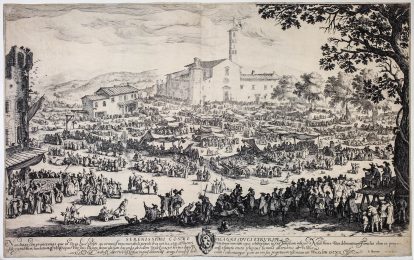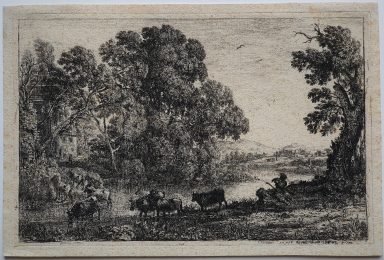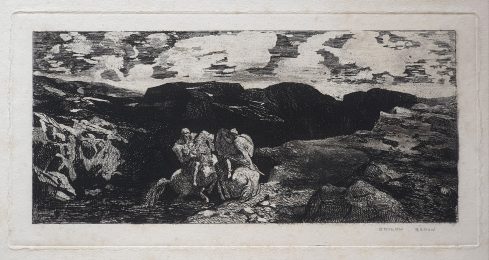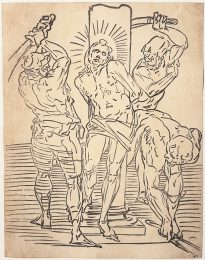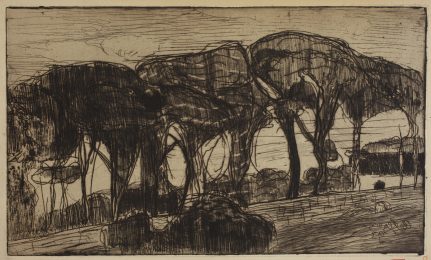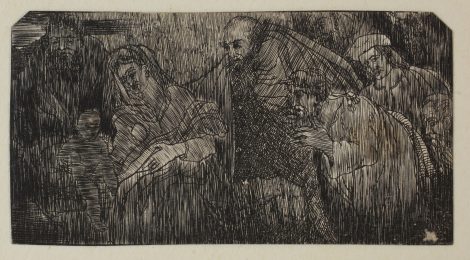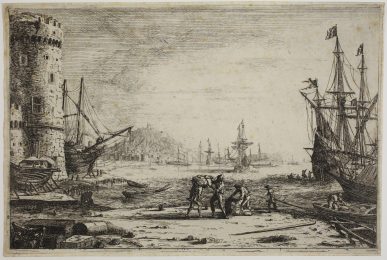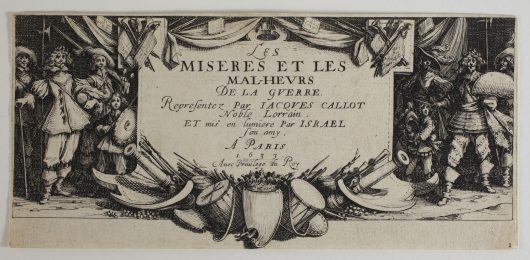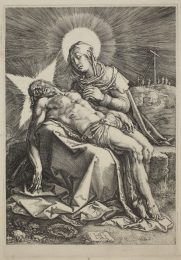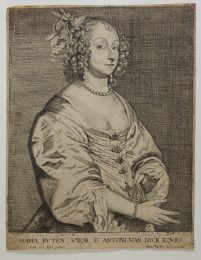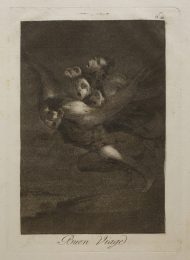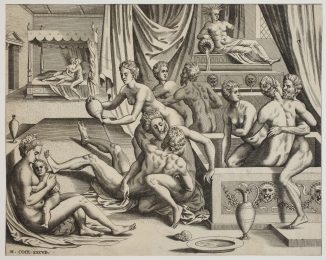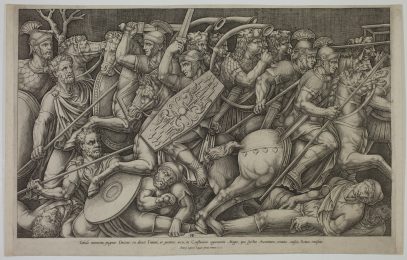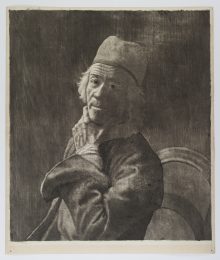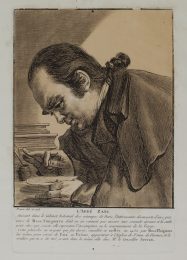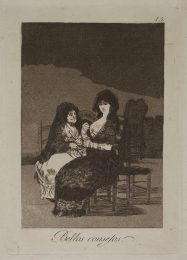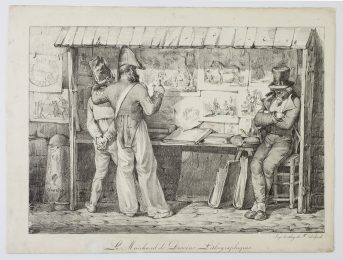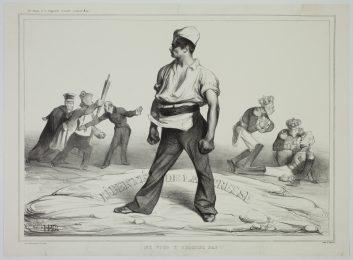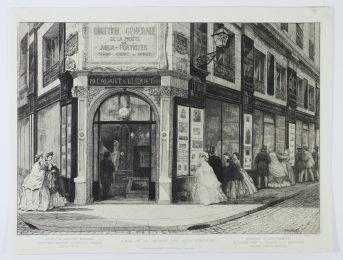Details — Click to read
Etching and drypoint, 141 x 207 mm. Bartsch 228; Biörklund and Barnard 45-1; New Hollstein 202.
Rare.
Fine impression of the unique state, the sulphur tint still visible in the sky, but the details in the far right slightly beginning to wear.
Thread margins all around the platemark. Sheet: 145 x 215 mm. Julian Marshall’s collection stamp printed verso (Lugt 1494)
Provenance: Julian Marshall (Lugt 1494); Paul Prouté S.A., Catalogue “Centenaire” 1re partie Estampes, 1978, n°39: « Très belle épreuve, filet de marge. » (‘Very fine impression, thread margins’).
In very good condition. Light stains in the upper corners. Minimal retouching in grey ink on the mast of the sailboat, as well as touches along the platemark, to the left and to the right. Because the light strokes in drypoint wore out quickly, a number of good impressions were retouched in ink, as Erik Hinterding observes about the impression in the Frits Lugt collection, acquired in 1919 from P. and D. Colnaghi & Obach: “The print was lightly etched and impressions are almost always a little faint and misty (…) Like some other impressions of this print, this sheet has been retouched with grey ink, including on the post on the left beside the road.” (Erik Hinterding, 2008, vol. I, pp. 430-433). Hinterding mentions specifically the impression in the Teylers Museum in Harleem. The New Hollstein volume also mentions retouched impressions in the collections of the Rijksmuseum, Amsterdam (brush and grey ink, and pen and black ink), of the Staatliche Museum, Berlin (foliage added with pen and brown ink), of the Staatliche Kunstsammlungen, Dresden (framing lines in pen and black ink), of the British Museum (two impressions retouched in pen and grey ink), in the Rothschild collection in the Louvre (brush and grey ink), in the State Hermitage in St Petersburg (framing lines in pen and black ink), among others (New Hollstein, Rembrandt, Text II, p. 90).
The landscape drawn by Rembrandt has not been clearly identified and the etching received different titles in different catalogues: La barque à voile [Barge with a sail] (Bartsch), Cottages beside a canal, with a church & sailing boat (Nowell-Usticke), Cottage beside a canal, a view of Diemen (Boon and White). Its date is likewise uncertain: Bartsch thinks that Rembrandt etched it around 1645, Hinterding around 1641. We go with the date given in the New Hollstein by Erik Hinterding; like Frits Lugt, he places the landscape near Ouderkerk on the banks of the Amstel, south of Amsterdam.
The lightness of the strokes on the right of the impression, the grounds which have been left almost blank and the streaks of sulphur tint sweeping across the grey sky give this landscape a wintery feel that is quite rare in Rembrandt’s etched oeuvre.
References: Erik Hinterding, Rembrandt Etchings from the Frits Lugt Collection, 2008, vol. I, no. 180, pp. 430-433; New Hollstein, Rembrandt, text II, compiled by Erik Hinterding and Jacob Rutgers; Paul Prouté S.A., Catalogue “Centenaire” 1978, 1re partie Estampes.

